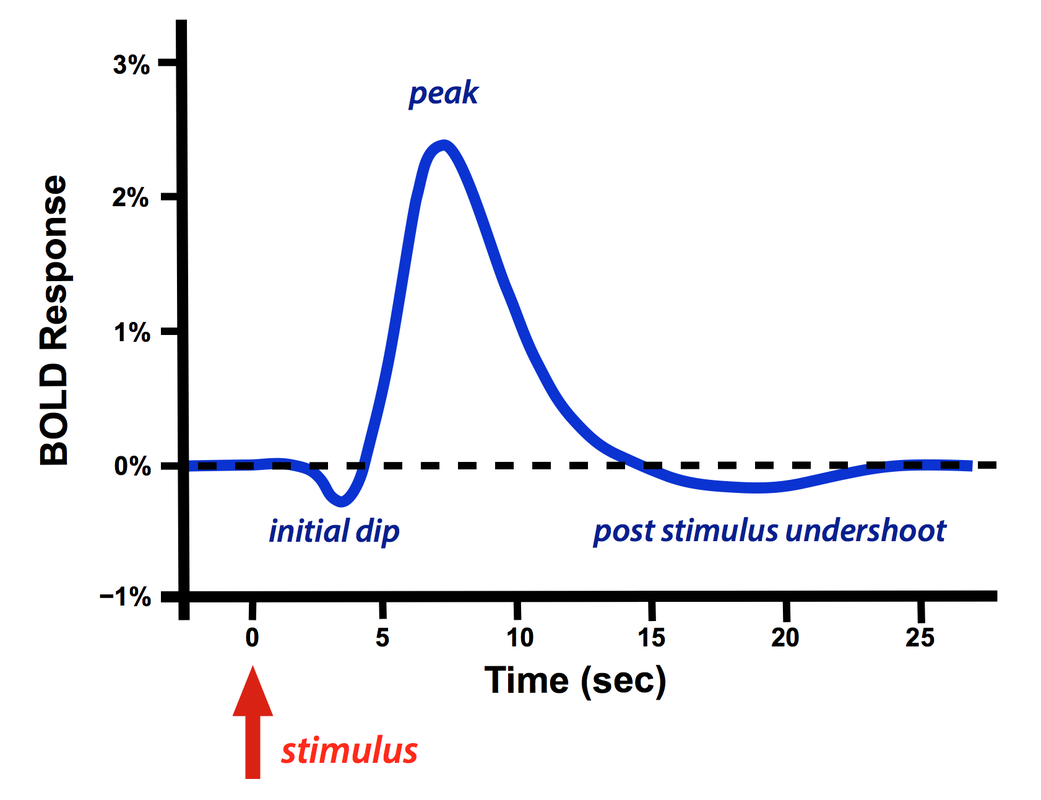Hemodynamic Response Function (HRF)
So now you know that we’re measuring changes in blood flow, but this is not a process that happens instantaneously. It is theorized that once neurons fire, the measurable BOLD signal does not appear until 4-6 seconds after. Not only that, but we are limited by our TR which is typically greater than 2 seconds - we can only see what is happening every 2 seconds.
What about the things that happen during those 2 seconds and how do we account for the difference in tme? Those are still important, but since we can’t directly measure that, we must use statistical models to do our best to estimate it. The HRF is a statistical model of the BOLD signal in response to stimuli. It is estimated that after a region becomes active, the change in blood flow isn’t measurable until about 4-6 seconds after. Below is a figure that shows what this reponse would look like.
 Image from: https://mriquestions.com/does-boldbrain-activity.html
Image from: https://mriquestions.com/does-boldbrain-activity.html
Application
This lecture does an incredible job at introducing you to the HRF and explaining how we use it to analyze fMRI data.